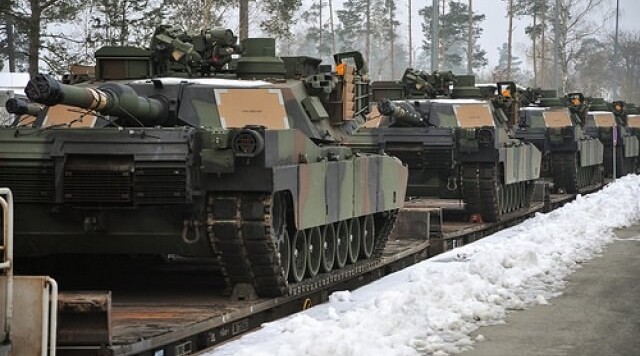In 1835, Tocqueville wrote that Americans "care but little for what has been, but they are haunted by visions of what will be; in this direction their unbounded imagination grows and dilates beyond all measure." The durability of Tocqueville's insight is confirmed by the fact that in 1985 the majority of Americans came to embrace a futuristic idea of laser satellites that could make the nation invulnerable by shooting enemy missiles out of the sky, even though nothing remotely resembling such a technology existed. Linking this emotionally charged realm of American mythology and political culture with the arcane worlds of both defense technology and high-level diplomacy, historian Frances FitzGerald offers an analysis of Reagan and his Strategic Defense Initiative (SDI) that helps to answer the question of how, during the Reagan Administration, the United States committed itself to a multibillion dollar missile defense program that was not only technically infeasible, but which threatened the very basis of U.S.-Soviet relations.
Biographies of Reagan and memoirs of former top officials in his administration have depicted him as essentially disengaged from executive decision making and ignorant of the details of policy. FitzGerald effectively argues that such portrayals should not lead us to conclude that Reagan was a doddering simpleton or a crude ideologue living a fantasy of Hollywood westerns. That Reagan dealt in a world of perceptions did not make him "just an actor." Indeed, it was his instinct and training as an actor that kept him highly attuned to what his audience, the American people, sought in his performance. FitzGerald shows how Reagan perfected his presentation and rhetoric as head of the Screen Actors Guild, as traveling spokesman for General Electric, and as governor of California, always honing his speech and affect to please his audience. Along the way he developed a potent script that cast him as a citizen-politician in the vein of the protagonist Jimmy Stewart portrayed in Mr. Smith Goes to Washington, a courageous political innocent who exposes the corruption he finds around him.
Reagan's story of how he came to endorse the Strategic Defense Initiative is itself a version of the Emperor's New Clothes. In his account of his visit to the North American Aero-space Command facility at Cheyenne Mountain, Nevada in 1979, Reagan claimed he saw what defense experts could not or would not. He said he was struck by how, with all the technological sophistication of the radar tracking command center there, the United States was helpless to stop an incoming Soviet missile. This, the tale goes, led him to see the madness in MAD›the policy of Mutually Assured Destruction that was made official by the Anti-Ballistic Missile Treaty in 1972. He decided to defy the logic of Washington and resolved to find a missile defense strategy. This story turns out to be just that - a story, as Fitzgerald points out, for Reagan's opposition to the ABM Treaty went back at least to the 1976 election, and promotion of the idea of missile defense did not originate with him but with conservative ideologues in and around his campaigns.
The rhetoric Reagan used to promote SDI reveals something about both him and America, FitzGerald claims. Reagan drew easily on a rhetorical thread in American political culture that runs from the Puritans through Protestant revivalism and American populism to anticommunism. Within each of these interpretive frameworks the virtuous impulses of the common people are seen to be threatened by conspiracies of hidden elites, be they Catholic, urban cosmopolitan, or Communist. Here, America is continually beleaguered by internal and external threats, yet always optimistic about harmony and redemption. Reagan evinced both sides of this rhetoric, referring to the Soviet Union as the "Evil Empire," but also calling for a "peace shield" that would rid mankind of the horrible threat of nuclear annihilation. Readers of this book who go back to listen to Reagan's Evil Empire speech may be struck less by the infamous reference to the Soviet Union than by Reagan's suggestion that even the domestic nuclear freeze movement, which by then had won over significant numbers of American Catholics and Protestants, was the work of "Old Screwtape"›the Devil himself. It is a speech worthy of John Winthrop. Yet, rather than simply demonize the freeze movement, Reagan would soon outflank it with a peace plan of his own. Now the redeemer, Reagan in his Star Wars speech called "upon the scientific communityŠthose who gave us nuclear weapons, to turn their great talents now to the cause of mankind and world peace."
However, for all of this rhetoric of peace and safety, nothing in the various proposed missile-defense technologies could claim to protect the whole American public. Nevertheless Reagan understood that you could not tell the American people that you can only protect them halfway. His genius was to come off as a shepherd and a conciliator by promoting a program that in fact had little to do with protecting populations and even less to do with peace. Using the language of hope and limitless American ingenuity, Reagan promised a day when science could build an umbrella in space that would make Americans forever free and secure. Americans responded to this rhetoric and, in poll after poll, said that the United States should build such a system. Indeed, most Americans believed we had one already. Hence the populist Reagan filled the gap between the defense policy experts, who since Truman had relied on a logic that allowed each side to continue to build nuclear weapons at breakneck pace, and the American public, who wanted an end to nuclear weapons without falling behind the Soviets in armaments.
FitzGerald gives a compelling account of how Reagan sold SDI to the American people. But perhaps even more important, in doing so she helps explain how even today, with the Soviet Union long dissolved, we continue to live with Reagan's dream. While every missile defense test carried out since then has been an utter failure, and while the concept has continued to be met with strong opposition around the world, the United States remains committed to the deployment of an antimissile system. Both Bush, Sr., and Clinton continued tests of a missile defense system, and George W. Bush has made it a top priority in his administration. Even the case for missile defense is still made in the terms Reagan set down, which is to say in the language of morality and patriotism over that of feasibility. As U.S. Defense Secretary Donald Rumsfeld said recently, "It is not so much a technical question as a matter of constitutional responsibility. Indeed, it is, in many respects, a moral issue." Thus does such fear and fancy continue to grow and dilate beyond all measure, committing the United States to a dangerous strategy of foreign relations at enormous cost for a project that exists largely in the imagination.
--Joseph Lowndes, New School for Social Research



